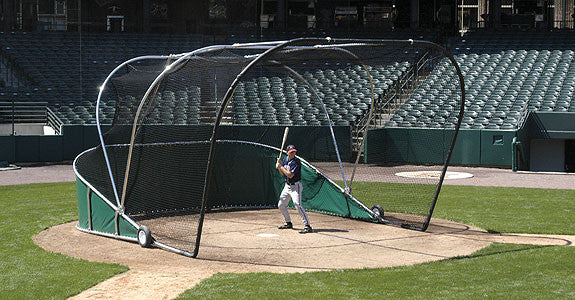- Some Practical Thoughts On Baseball Drills By Category
- Drills are the essence of sports.
- Knowing the fundamental basics within each drill, allows you to make on the spot corrections and suggestions for the players.
- Look for versatility in your drills, can they provide you with more than one purpose? You will ALWAYS find that time is short, making versatility more important.
- Keep drill segments to a time allotment. If it's not working, move on. If they have accomplished your goal for that drill, move on, even if you have time left in your schedule.
- Select drills that are easily implemented as well as fun. Lining up on the foul line to run sprints has been fun for very few over the years. Working on increasing your base running times, somehow isn't running, it becomes good hearted team and individual competition. In doing so, you gain practice time on baseball skills; but maintain the conditioning. Win/win! This is but one example, you can accomplish the same results with any skill you want to work on.
- The more activity, the better. Keep groups small, repetitions high. If a drill runs for too long, quality of the repetitions diminishes, not from fatigue; but from loss of concentration.
- Strive to stay away from situations where you are painted into a corner. Running a drill until players have completed X number of perfect repetitions can be counter productive.
- The focus often shifts from fluid athletic movement to robotic, by the numbers movement, in the hopes of not making a mistake.
I as a coach, and a parent would like to put my opinion in on this as it continually comes up and probably always will. It is my true believe, now it is becoming more and more peoples, believe that kids need to change sports back off of training for our given amount of time to let their bodies and their minds to something else. Players whether they be girls or boys need to enjoy more than one thing in their life and the intense pressure put on them from such an early age to become a specialist is unrealistic. Think how many times you changed your mind and what you wanted to do in life as you grew up kids like diversity. Then just a big a factor is the stress is put on the muscles, joints, just the physical well-being by consistently trying to do the same thing over and over. The body needs rest and diversity so it's my firm opinion and that of experts much much smarter than me that kids need to rest their bodies, stay active, do other things in their careers so they get enjoyment. If they are good they will get the chance to start to specialized as they get older. To push kids that are under 16 and to pigeonhole is not a good thing. Think about it how you work your own life and don't try to impose your wishes and wants on your player.
Opinion from Coach Arnald Swift
One of the biggest concerns that coaches and associations have these days is with pitchers and the care of their arms. Ultimately it really is the coach that needs to watch this but parents, associations, leagues, all have different thoughts and recommendations. I ran across this article from USA Today that has some nice information, and while it's not the only thing it certainly is something to consider. One side note in this conversation you as a parent must be aware of how much your son or daughter is pitching because many times a really good pitchers is playing on more than one team and therefore can accumulate more pitches than he/she should throw within a time. Because it's league is only keeping track of that one so you could even get caught up and throwing double what the boy/girl should be allowed. He was a parent need to monitor this.
I have a grandson that played in California, there league went so far as to count 35 pitches against the catcher if he came into pitch. And there league which was 14 and under if a catcher came into pitch he automatically had 35 pitches against out of the 70 possible so this is even a case of a league going a little further toward pitch count and arm care.
It is interesting to note that because of the arm motion softball pitchers can and do pitch huge number of pitches with no arm problems while we should be cautious there are no recommendations for softball, the pitcher will tell you by just looking, listening, and using common sense.
This one came from US a baseball medical and safety advisory committee: and published with their permission.
USA Baseball Medical And Safety Advisory Committee Guidelines
Age Max Pitches Game Pitches Week
8-10 50 75
11-12 75 100
13-14 75 125
15-16 90 2 Games Week
17-18 105 2 Games Week
Ages To Learn The Different Types
Pitch Type Age To Learn
Fastball 8
Changeup 10
Curveball 14
Knuckleball 15
Slider 16
Forkball 16
Splitter 16
Screwball 17
Survey Of Types Of Balls Thrown ~ Ranked Least To Most For Pain Caused
Fastball
Changeup
Curveball
Slider
Survey Conducted By Dr. Joe Chandler, Team Physician, Atlanta Braves on 101 Braves Hurlers In 2000
Dear Coach
I coach baseball at the 13-15 Babe Ruth level. We work hard with our pitchers holding runners on to avoid giving up really easy stolen bases. At this point, I think our pitchers are doing well at this task. I have a question or two about the second baseman and shortstop and their jobs of helping hold runners on at second base. I feel if we are going to give up a steal of third base, the runner that steals should at least be held on 2B properly before he earns that stolen base on us.
1) Are there different responsibilities for the two positions in regards to holding the runner at 2B vs. a left handed or right handed batter?
2) What should the footwork for the short stop and second baseman involve?
3) Should they be saying anything, tapping their gloves, or etc.?
Thanks for any tips you can offer me in regards to answering my questions.
==================================
Dear Kelly
You have this pretty well in hand and I answer that because of your suggestions and thoughts. The decision on who holes a runner at second with distractions, playing close to him, are all dependent upon the batter and where he's most likely at the ball. The general answer is whether he's left or right handed but there certainly can be exceptions as you get to know your opponents. There are several ways simply bluffing, going always a bag, living in front of the runner and backing away, moving up directly behind the runner so he knows you're there. All these things have to be done in synchronization with your pitcher so that you don't get caught out of place. Now your pitcher can help you with bluffs every once in a while, second and third looks (very is looks at the runner), pickoff plays even when there not successful which is second are pretty rare but they keep a record closer. But you are right you got to do a combination of things and you need to make sure a runner knows you're there otherwise he'll become very comfortable and get an extra step or two when the balls hit, we wants to steal, distracting your pitcher, so is a variation of what I've said and above what you said.
Coach Arnald Swift
We just came across to the new rule that's going into effect for the 2017 softball season at the NCAA level.
The dugout faces must be completely enclosed with netting or protective material all the way up to the roof line. This is for the player protection from foul balls, thrown equipment, thrown balls anything that could cause an injury entering the dugout.
I don't know that there been that many cases of injury, but there must've been something that precipitated this move and rules and move like this are not normally preventive their reactionary. I don't know what did it for my guess is there is one. Baseball and softball players are known for hanging on the dugout fence, being over it, even being outside of it and having to duck out of the way of balls flying in there.
I'm an umpire and have seen it along with being a coach for over 40 years so I don't know that it's a bad rule. The question I have for your comments is should all dugouts be protected from the ball getting into that dugout whether it be baseball, softball, no matter what the league.
I may be dating myself but I can remember dugouts that were ground-level and had no protection in front it was like sitting on a bench in a shed watching the games. Then the normal progression was to put up fences about 3 to 4 foot high to protect, then bring down lips from the top of the dugout have become standard. Now is this the evolution of dugout protection that's the question? Agree or disagree
How to Apply Pine Tar to Your Bat
The old adage a little goes a long way has never been truer than it is with pine tar. Regardless of whether you use the pine tar stick or liquid and a rag, you're only going to need a very small amount.
Applying pine tar to your bat is rather simple. You will only need:
Bat
Pine tar stick (or container of liquid pine tar)
Application rag (if using liquid pine tar)
Duct tape
Rosin bag
You can find many of these items in our Bat Accessories section of our online store. Or, you can create a pine tar rag yourself at home without having to pay a premium price. Follow these steps to create your own rag:
1. Use a flat and clean cloth rag and cut into a 9x9 inch square. Avoid terry-cloth towels.
2. Cut the duct tape into 11 inch strips. Cover one side completely, keeping 1 inch on either side to overhang on the front of the rag. This will allow you to apply pine tar to your bat and not get any on your hands.
Now that you have your rag, you'll want to properly apply the pine tar to your bat. Follow these steps to ensure you are doing this correctly:
1. Take your rag or pine tar stick and apply to the area of the bat on your handle that you want. Make sure you check with your league to see how far up you can apply the tar.
2. The handle will be sticky, so use a rosin bag to make it more "grippy."
Parents you need to kind of look at your kids coaches. A lot of coaches are just loud and still have the best of intentions for your players/children. Never allow volume to be equated with bullying, volume usually has little to do with it what you really need to know is what he says to the players and how he treats them then we may be looking at bullying.
This article could help anybody that reads it understand what is meant when bullying is talked about.
Bullying is a growing epidemic in sports. As sports parents, it's critical for you to be prepared to protect your young athletes. If you think this issue won't ever come up in your kids' sports careers, think again. Bully coaches are the number one topic parents write us about at Kids' Sports Psychology.
Have your kids ever had a coach who yelled at, insulted or intimidated them? It's possible they have, but were too embarrassed to tell you. It's important for you to be on the lookout for bully coaches and to take immediate action if you suspect your young athletes are being bullied.
Bully coaches target all kinds of young athletes. They can set their sights on kids who are overweight, small, or who lack confidence, for instance. These coaches also target gifted athletes because they believe their approach will "toughen up" their athletes.
It's important to keep in mind that most volunteer coaches are not trained. Many of them use teaching techniques that their coaches used with them. Some of them don't understand they're acting like bullies. Many coaches will change their behavior if you approach them in an appropriate manner. We've received letters of confession from coaches who say that once they understood how much their words and actions hurt their athletes, they changed their style.
Whether a coach's bullying is intentional or unintentional, your job as sports parents is the same. If your athletes are teased, excluded or otherwise treated badly by coaches, you need to take steps to help keep their confidence intact, stay focused under adversity, and remain in sports.
The bottom line, for you as parents: Be on the lookout for bully coaches and arm yourself with the information you need to take action.
The best sports teams are made up of players who work together and are willing to make sacrifices. A team with unselfish players who support each other will generally perform better than a group of individuals that doesn't play as a team. This is why, in addition to working on individual skills, it's also important to learn how to play with others.
Here are five tips to help kids be a great team player.
Be a "We Player" Not a "Me Player"
A "me player" is only concerned with the aspects of the game that affect him or her, such as how many points he or she scores. If the player doesn't benefit from something, then he or she is not going to do it. A "we player" understands that he is part of a team, and is committed to helping the team win, regardless of his individual role. If you're unsure of what type of player you are ask yourself this question, "Would I be happier if I played really well and the team lost, or if I didn't play as well but the team still won?" The answer to this question will determine whether you're a "me player or a "we player".
Work Hard and Encourage Others
Not every player on your team will be motivated to work hard, and some of your teammates may need some encouragement to practice and get better. So the next time you go to the gym or the field to work on your game, bring a teammate or two with you. Encourage your teammates to spend time developing their skills. The extra practice will help all of you improve, and working together will help you bond as a team.
Recruiting Myth
If you are good enough, college coaches will find you
This is an age-old adage that is often heard throughout the recruiting process and is both out-dated and incorrect. These words are often spoken by an older coach who wishes to dismiss any thoughts by the student-athlete or parent that they should market themselves to institutions by sending out their information. The fact is that this statement is true if you are one of the top 100 players in the country, have already received a great deal of accolades by your sophomore year, and most likely already have several scholarship offers in hand. This is simply not true for most college baseball prospects outside of the top 100. The only way they will know about you for sure is if you send them your profile and express your interest in them. Recruiting is now a global process and despite your skills or success in high school, it is extremely easy to be overlooked by college coaches who have thousands of athletes to scout and hundreds of potential venue’s to scout them at. College coaches don’t read your local town paper and they probably don’t attend your games and only the top 1% of high school athletes are truly discovered. Your performance on the field or court will go a long way toward determining whether or not you get a scholarship offer. You need to be getting results that place you near the top of your competition if you want to get noticed. However, there are other factors which will determine whether or not you get an offer including; grades, character, work ethic, coach-ability, etc. Market yourself with truth, determination, follow up, and stay after it.
Tip No.1: Don't Bunt With Two Strikes
This is a tough one when it fails. We have all seen it in youth baseball when the third baseman plays in close anticipating a bunt.
When the strike count gets to two, the coach will yell to the third baseman something like this: "Two strikes on the hitter. Move back so you are even with the base."
When the fielder moves back, depending on the ability of the batter, I love to give him another chance to bunt, given that the defense and opposing coach are sure the batter will not bunt. I have been successful with this and at other times it has failed.
One warning, if you try this. When your batter does fail, you will hear from all the "General Managers" in the bleachers.
More: 4 Biggest Mistakes Baseball Teams Make in Practice
Tip No.2: Catch Everything With Two Hands
I know most coaches and parents will hold me to task on this one. When my players are moving laterally reaching for a fly ball, I just want them to catch the ball any way possible.
I don't want my players thinking they have to catch everything with two hands if some catches are easier one-handed. If the shortstop is sprinting for a pop-up behind the third baseman, and has to reach for it, a one-handed catch works best.
When catching a pop-up hit right to a player, with little or no running, a two-handed catch works best. But too many coaches and parents overemphasize catching everything with two hands. Coaches need to have youth players practice catching balls with one and two hands.
Tip No.3: Don't Make the First or Third Out at Third Base
Tim McCarver won't invite me over to dinner on this one. I send my runner to third most of the time not worrying about how many outs we have.
I have my teams run the bases aggressively. We get thrown out at third and home more than other teams. But we also win more games than we lose.
More: Drill of the Week: Baseball Catching Drill for Kids
In youth baseball, every game has its share of wild pitches and passed balls. From my many years coaching third base I know that we have a great chance getting the runner home on a wild pitch or passed ball.
I hate ending the inning with a player who doesn't score from third base when some aggressive baserunning would have landed him on third and he would have scored.
Tip No.4: Bigger Baseball Gloves are Better
I was guilty of this when my oldest son played Little League. Every year I wanted to get him a bigger glove figuring the larger the glove, the better chance of the ball landing in the pocket. I was 100 percent wrong on this.
I remember going to Yankee Stadium with a close friend who had an "in" on everything and knew a lot of people. We had front row seats and before the game one of the Yankee infielders came over to say hello to my friend.
As they were talking, I could not keep my eyes off the player's glove and was amazed at how small the glove was. It just about outlined his hand.
I then learned that "glove control" is key for fielders. So, smaller rather than bigger gloves are better, especially for infielders, except the first baseman.
More: 5 Ways to Get Noticed at a Sports Camp
Tip No.5: Bat Your Best Hitter Third or Fourth
Years ago I remember in a few All-Star games, Willie Mays batted leadoff. I know the theory is that you get a couple of batters on base and the big guns will drive them in. I don't agree with this all the time.
I found that in youth baseball sometimes there is a large disparity with the talent of the players. Many times teams have one or two excellent players.
In youth baseball I prefer to bat my best hitter first or second. I cannot tell you how many times my team was down by a couple of runs in the last inning with the bottom of my batting order up.
If my best player batted third or fourth, I'd be doing everything I could to get him up but many times games ended up with my best hitter on deck. Now I like to bat my best player first or second. (I know you might think I'm sacrificing some runs but I love the idea of him getting an extra at bat a game.)
Like everything in coaching your talent at the moment will determine your move as the manager or coach. The term "thinking outside the box" has been overused in many instances.
But when coaching, you do want to think outside the box if it will give your players and team an advantage to succeed. Unpopular decisions may be the best decisions at the time you make them.
Marty Schupak










